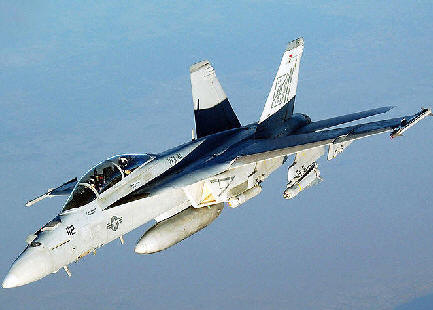 |
|
|
|
|
|
|||
|
By |
||||
 |
March 18, 2010 -
Two Navy Boeing F/A-18E Super Hornet jets were involved in a mid-air
collision at approximately 10 p.m. on March 15th while on a routine
training mission flying in the Fallon Range Training Complex. Neither
pilot was injured.
The Fallon Range
Training Complex (FRTC), located in the high desert of northern
Both aircraft are
assigned to Strike Fighter Squadron One Three Seven (VFA 137) based at
Naval Air Station Lemoore, |
|||
|
One pilot safely
landed his aircraft with reported damage at 10:13 p.m. at Naval Air
Station (NAS) Fallon. The other aircraft crashed in a remote area east
of NAS Fallon. The pilot ejected safely and was recovered near the crash
site at 11:20 p.m. by the NAS Fallon "Longhorns" Search and Rescue team,
which flew a SH-60F Seahawk helicopter to the site. The pilot was
transported to a local medical facility for further evaluation and has
since been released. The cause of the mishap is under investigation.
The Boeing F/A-18E
Super Hornet is a 4.5+ generation carrier-based multirole fighter
aircraft. The F/A-18E single-seat variant and F/A-18F tandem-seat
variant is larger and more advanced derivatives of the F/A-18C and D
Hornet. The Super Hornet has an internal 20 mm gun and can carry
air-to-air missiles and air-to-surface weapons.
Additional fuel
can be carried with up to five external fuel tanks and the aircraft can
be configured as an airborne tanker by adding an external air refueling
system. Designed and initially produced by McDonnell Douglas, the Super
Hornet first flew in 1995.
|
||||
|
|
| ?AvStop
Online Magazine
Contact
Us
Return To News
|
|
